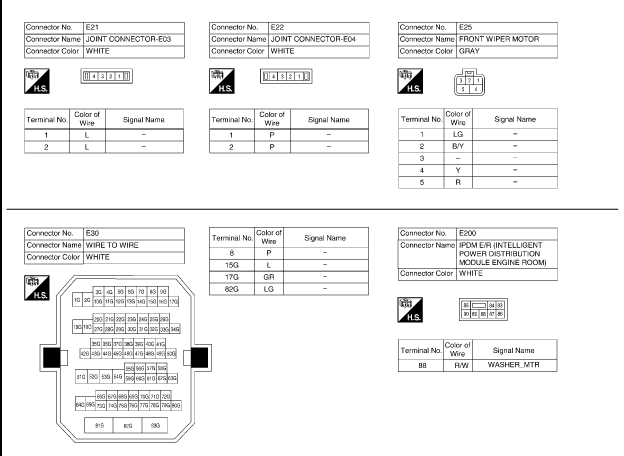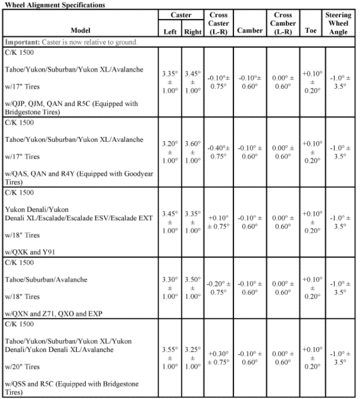swathdiver
Full Access Member
Was looking up the alignment specs for my truck and noticed that there are different caster settings for each brand of tire. Why would that be?

Disclaimer: Links on this page pointing to Amazon, eBay and other sites may include affiliate code. If you click them and make a purchase, we may earn a small commission.
For every new tire you buy, for instance buying a different size or whatever. Youll need to get them properly balanced so you wont have premature tire wear and most tires have warranties for this.Was looking up the alignment specs for my truck and noticed that there are different caster settings for each brand of tire. Why would that be?


Not an alignment expert here, but I was a certified tire tech in my younger years. The actual size of a tire can vary considerably between brands and especially between tire types. One brand's 275/55-20 touring tire can be a couple millimeters wider or narrower or shorter or taller than another brand's touring tire. Then there's the same brand but different type, such as the Goodyear Eagle 275/55-20 that came stock on my 2WD LTZ having a slightly narrower section width than the Goodyear Wrangler 275/55-20 that came on the 4WDs. If the alignment specs are specific to the caster, I'd venture to guess that that would be for better on-center feel between the tire types. An all-terrain tire on a 4WD could need different caster settings than a street/touring tire on a 2WD. Also, the 4WD would be a little higher, putting the control arms at a different angle, requiring slightly different alignment settings. It's all probably minor differences, but geometry is geometry and the engineers specify certain numbers to be held.
But, what does the pic you attached have to do with any of this?
View attachment 196537
Great info Chris. The pic was the alignment spec sheet for 2009 Yukons, Tahoes, Suburbans and XLs with different drives and tire sizes and brands. I don't see it up there now.
